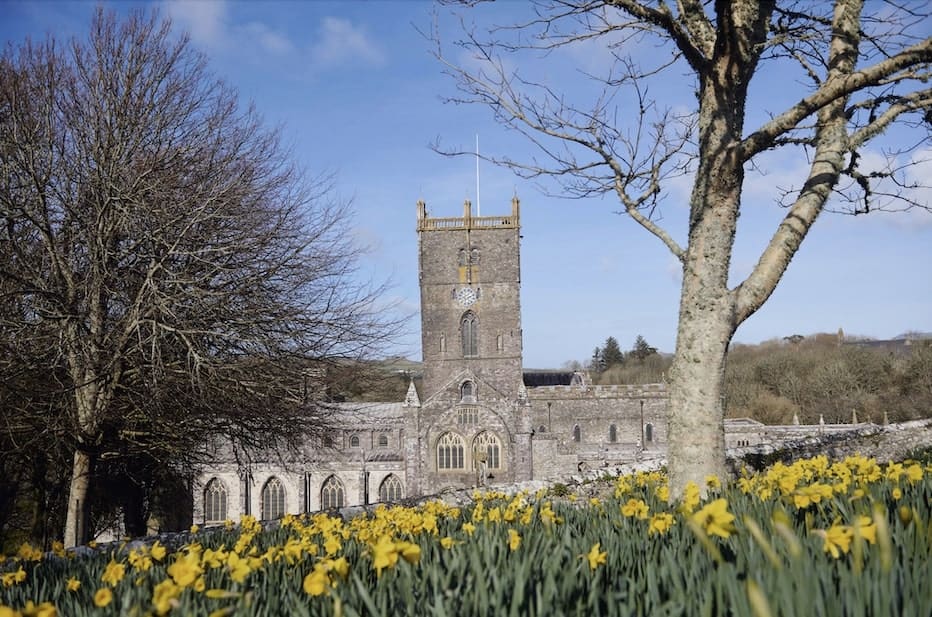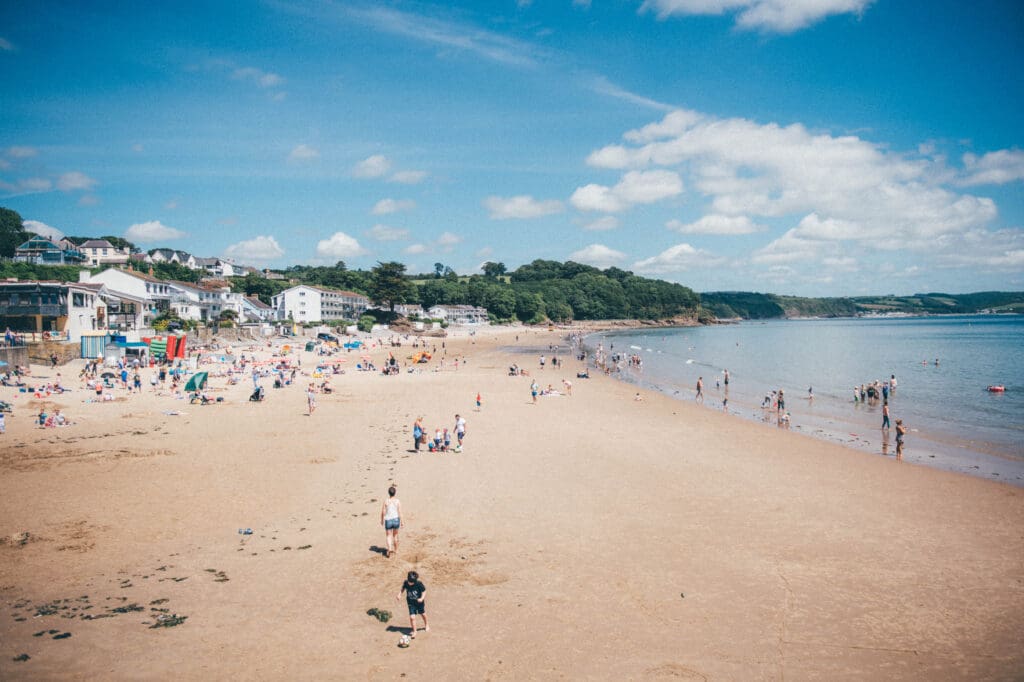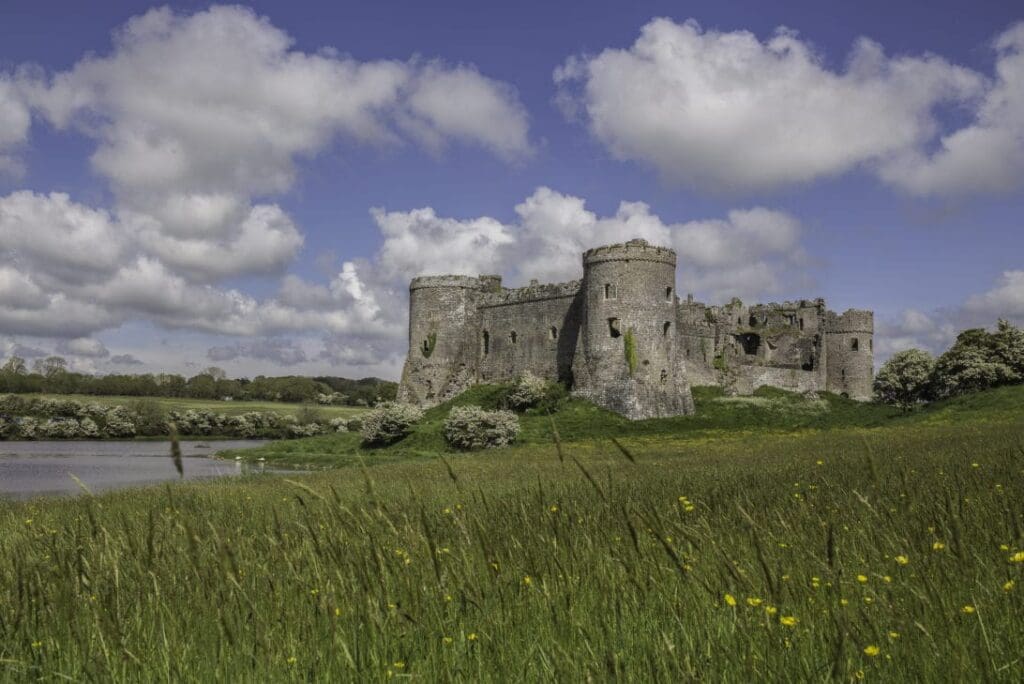The Pembrokeshire Coast isn’t your usual National Park. It’s coastal for a start!
One of three National Parks in Wales and fifteen across the wider UK, it’s the only one that exists mainly in recognition of its coastline. Plus, it’s split into four parts, each one with its own quirks and qualities — perfect for exploring as we welcome in the new spring season.
Whether you’re looking to enjoy miles of golden sands or a hike with a view of the waves, along the Pembrokeshire Coast you’ll find 186 miles of shoreline scenery — ranging from craggy volcanic outcrops in the north, to towering limestone cliffs in the south.
Whether you’re spending a mini break along the coast this spring, or are just looking for a local day out, the Pembrokeshire Coast National Park Authority is sharing 7 things to do during the *fingers crossed* much warmer months.
1. Tour the National Park on two wheels
Although the Pembrokeshire Coast is one of the smallest of the UK’s National Parks, there’s far more to explore than you may think! So, to help you get from A to B more quickly — and conquer those steep hills (we know you are cheering at the thought of assisted pedals!) — their e-bikes have got you covered.

Located at Oriel y Parc National Park Discovery Centre, you will find our stylish and comfortable electric bikes ready for hire. With step-through frames and a basket on the front, they combine practicality with ease of use. So why not pack up your picnic and head on an adventure — and a sustainable one at that!
A bike ride along the Pembrokeshire Coast will always blend centuries of history with Welsh culture and spectacular scenery — but it also reduces congestion and carbon emissions. However, safety is key, so don’t forget to bring your helmets from home.
2. Be inspired by the next generation of artists
Immerse yourself in the Welsh landscape as seen through the eyes of artists; see local history brought to life in colour; and spark your imagination as you take a tour through one of the many exhibitions at Oriel y Parc National Park Discovery Centre.

Located just a stone’s throw away from St Davids Cathedral and stunning beaches, the centre is free to enter and features a changing programme of exhibitions from Amgueddfa Cymru – Museum Wales, and local artists, as well as a picnic area, café and shop.
3. Visit the UK’s smallest city — which sits within the National Park!
With a population of just over 1,700 people, St Davids proudly holds the record of being Britain’s smallest city — but what it lacks in size it certainly makes up for in stunning landscapes, Welsh history and delicious delicacies.

After exploring art and culture at Oriel y Parc National Park Discovery Centre, visitors can soak up the scenery on the beautifully rugged Pembrokeshire Coast Path. Embarking on the 5-mile-long St Davids Head coastal walk, you can expect to spot an awe-inspiring island-dotted seascape, a variety of wonderful wildlife and an array of prehistoric monuments — including Coetan Arthur, the remains of a Neolithic burial chamber.
One thing is for certain — you’ll never be short of spots to take the perfect selfie in St Davids!
4. Experience the Iron Age
Embark on a prehistoric adventure like no other, where you won’t just see what life was like for members of the ancient Demetae tribe who lived in this corner of Wales more than 2,000 years ago – you’ll experience it with all your senses!

Meet the friendly Iron Age villagers, observe their skills and crafts, and learn how they lived sustainably and in harmony with the land.
The Iron Age village at Castell Henllys brings history to life. From druid magic, where you’ll learn how to light a fire and make bread, to prehistoric textile workshops — this spring, the whole family can learn what it really takes to survive in Iron Age Wales.
5. Bathe in one of Pembrokeshire’s Blue Flag beaches
Did you know that Pembrokeshire is home to more Blue Flag beaches than any other county in Wales? But these aren’t just bucket and spade spots, oh no — from water sports through to wildlife spotting, there’s something for everyone to enjoy.
If you’re looking for easy access, then Saundersfoot has a concrete slipway to take you down to the shallow waters — perfect for a dip. There is even an option for free wheelchair hire if required.

Or maybe you’re looking to explore the amazing marine life in the National Park? If that’s the case, then you’ll want to check out our array of rockpools teaming with lots of weird and wonderful creatures. Here are our top tips to get the most out of your rock pooling adventure:
- If you turn over rocks, put them back in the same position.
- Leave all creatures where you found them– they are much happier in their own homes.
- Rocks and seaweed can be very slippery – take care.
- Check the tides – it is best to go rock pooling at low tide.
- Be aware of the tide coming in quickly –make sure you don’t get cut off by the tide.
However you like to enjoy the water, be sure to stay safe — whether that’s through following the RNLI’s guide to beach safety or being careful on the cliffs around the National Park. Periods of heavy rainfall can impact the stability of cliffs so make sure to set up camp away from the rocks or coastline edge.
6. Step into medieval Wales at Visit Pembrokeshire’s Visitor Attraction of the Year
With an array of family events on offer across May Half Term, visitors to Carew Castle can learn horrid tales from Pembrokeshire’s past; enrol in sword-school; explore a medieval encampment; and even learn to make toothpaste from a herb recipe that’s been passed through the ages!

But it’s not just children and history buffs who will enjoy the site. Now a designated Site of Special Scientific Interest — due to its bat population and rare species of plants — Carew Castle is also a great place for wildlife lovers to explore.
As you make your way around the castle, make sure to keep an eye out for its array of wildlife — not to mention its resident ghosts…will you see the White Lady or the Barbary Ape?
7. Engage in a bit of island hopping
If you have a bit more time and are looking to explore the surrounding area of the National Park then we’ve got you covered — North Pembrokeshire’s offshore islands all have their own unique character, charm and wildlife just waiting for to be discovered.

From the famous Atlantic Puffin colony at Skomer to the feeding ground for porpoises at Grassholm, we guarantee that if you take one of the island voyage boat trips you’ll be creating magical memories to last a lifetime.

